Do you have a question about the Samsung OFFICESERV 500 Series and is the answer not in the manual?
Explains the basic terminology and components of the iDCS keysets, including programmable keys and line types.
Details the meaning of various LED colors and ring patterns used to indicate call status and types.
Describes how to use the speakerphone functionality and switch between handset and speaker.
Explains how to adjust ringer, speaker, and handset volumes using the UP/DOWN keys.
Details the tri-colored light indicator that provides keyset status information.
Instructions on how to initiate an external call using line buttons, access codes, or speakerphone.
Details on how to answer incoming external calls using the handset or ANS/RLS key.
Explains how to answer calls directed to a general alerting device via dial 67 or UA key.
Procedures for dialing extension numbers or group numbers to make internal calls.
How to answer internal calls by lifting the handset or using the ANS/RLS key.
Explains how to receive and respond to voice announcements during intercom calls.
Describes how the keyset automatically answers incoming intercom calls.
Instructions for placing calls on hold, indicating status with LEDs, and retrieving held calls.
How to place a call on hold so that other users cannot access it.
Procedure for placing a call on hold at another station.
Explains what happens when a call on hold is not answered within the timer.
Instructions to forward all calls to another station or external number.
How to forward calls to another station when the line is busy.
Procedure to forward calls when there is no answer.
How to access and use system-wide and personal speed dial numbers.
Instructions for entering and storing frequently used numbers in the personal speed dial list.
Procedure for assigning speed dial numbers to One Touch Speed Dial buttons.
How to redial the last number dialed using the REDIAL key or dial 19.
Instructions for making announcements through keyset speakers in idle condition.
How to make announcements through external paging speakers.
Procedure to page all designated keysets in internal and external zones simultaneously.
How to block incoming calls, activate DND mode and cancel it.
Feature to temporarily block calls during an active call, automatically canceled on hang-up.
Instructions to mute the handset transmitter or microphone during a conversation.
How to listen to background music through the keyset speaker and adjust volume.
Enables password protection for voicemail messages, linked to station passcode.
Automatically camps on to busy intercom calls when possible.
Allows users to choose from eight different ring frequencies for their keyset.
Procedure to change the default station passcode (1234).
Explains the function of soft keys below the display for feature access.
How to view and manage directory names for stations and outside lines.
Defines Caller ID and explains the two types: number-only and number-with-name.
Explains Automatic Number Identification (ANI) and its support on different trunk types.
Describes Calling Line Identification (CLI) and its support on ISDN circuits.
How to configure the display for incoming calls to show name or number.
Access to new messages grouped by sender or type.
Access to saved messages grouped by sender or type.
Option to listen to newly received voicemail messages.
Option to listen to previously saved voicemail messages.
Functionality to record and send messages to other subscribers.
Allows subscribers to control call handling and notification settings.
Instructions for subscribers logging in from their desk.
Instructions for subscribers calling from cell phones or outside the office.
How to access a mailbox associated with a different station.
Allows setting delivery options like urgency and reply requirements for recorded messages.
Enables scheduling future delivery of messages with various time options.
Allows setting an alternate location for calls and call supervision.
Blocks incoming calls, directing callers to a blocked greeting or mailbox.
Passes call control to another subscriber, who then manages call conditions.
Asks callers for their name and plays it before transfer, allowing acceptance or rejection.
Attempts to locate subscriber by calling a list of preprogrammed phone numbers.
Plays a night greeting instead of ringing during unavailable periods.
Used when you are away from your desk or unavailable; plays for all call coverage conditions if it's the only greeting.
Played to callers when you are already on an extension or designated location.
Used when Call Blocking is enabled or phone is forwarded ALL or DND.
Used during scheduled unavailable times, typically evenings and nights.
Used when Call Screening is enabled and a caller is rejected after their name is heard.
Notifies you via call at a specified number after messages are left.
Notifies your beeper service after each message is left in your mailbox.
Allows recovery of recently deleted messages until 3 a.m. the following day.
Allows recall of messages sent that have not been picked up by the recipient.
Access and organize reminders, commitments, follow-ups, or tasks.
Enter and manage up to 9 stored phone numbers for various features.
Set a weekly availability schedule for greetings and night intercept.
Place direct calls out of Samsung Voicemail using stored numbers or direct dialing.
Used for initial setup of subscriber settings like password and name.
Explains how the voicemail message light indicates new messages.
Monitors calls to voicemail and optionally answers them.
Pressing '#' to immediately send a busy or unanswered call to voicemail.
Diverts an incoming call to voicemail, overriding no-answer settings.
Easy way to leave messages using extension numbers or directory.
Leaves a message in your own mailbox for future reminders.
View new messages and use keyset displays and soft keys for voicemail interaction.
Delivers voicemail and fax mail messages as attached files to your email inbox.
Sends an email notification without attachments for new voice/fax messages.
Details how Caller ID is displayed in emails and client requirements for WAV/TIFF files.
| Category | IP Phone |
|---|---|
| Manufacturer | Samsung |
| Series | OFFICESERV 500 Series |
| Display | LCD |
| Networking | Ethernet |
| Codecs | G.711, G.729 |
| Power | Power over Ethernet (PoE) or AC adapter |
| Supported Protocols | SIP, RTP |
| Dimensions | Varies by model |
| Weight | Varies by model |
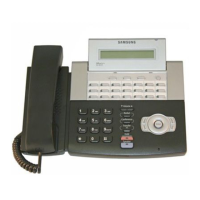
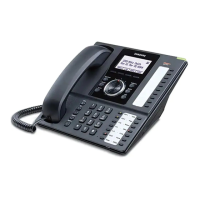



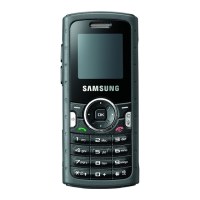
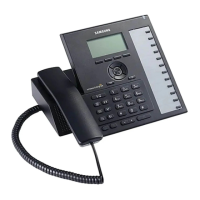

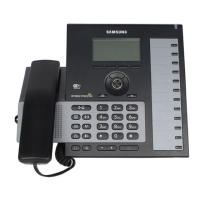
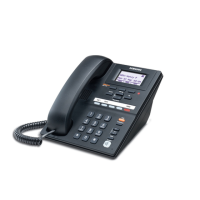

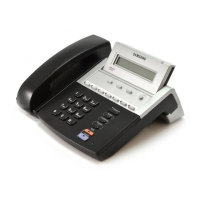
